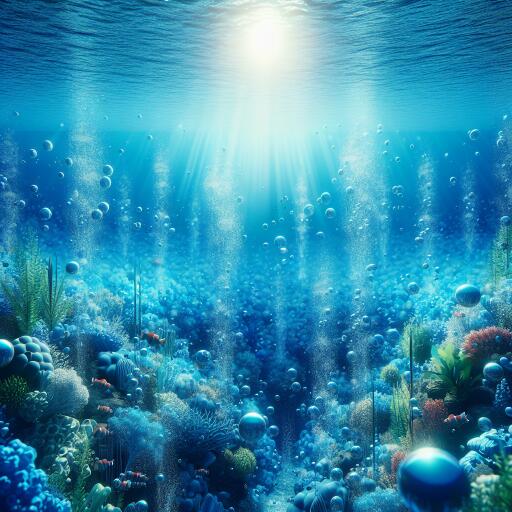
Blue Carbon: An Excellent Way to Store Carbon Dioxide
Ocean habitats are proving to be indispensable in the fight against climate change, acting as vital carbon storage areas. Despite their critical role, the specifics of how much carbon—dubbed “blue carbon”—is stored in marine environments like kelp forests, seagrass meadows, salt marshes, and seabed sediments have remained somewhat elusive. However, recent research has begun to shed light on these natural carbon sinks, highlighting their importance and vulnerability.
The Scottish Association for Marine Science has determined that seabed habitats around the United Kingdom alone hold an impressive 244 million tonnes of organic carbon within just the top 10cm of sediment. Astonishingly, the majority (98%) of this carbon resides in sediment-rich environments like mud or silt—areas often neglected in conservation efforts. These marine habitats are naturally adept at absorbing carbon and keeping it sequestered away from the atmosphere, provided they remain unspoiled.
The potential for blue carbon storage is vast. For example, marine areas in the UK have the capacity to capture nearly three times the amount of carbon absorbed annually by the country’s forests. This remarkable capacity suggests that identifying and protecting these blue carbon hotspots can significantly influence decisions about marine conservation priorities and developmental planning, such as choosing sites for offshore wind farms.
The ocean’s storage mechanism is quite similar to terrestrial processes: when marine plants like seagrass or kelp die and degrade, they become part of the sediment, thus acting as a carbon store. Another crucial player in this underwater carbon cycle is “plankton snow”—decaying plankton that contributes significantly to blue carbon storage. Even the droppings of marine organisms like Arctic krill, estimated at 20 million tonnes annually, sink to the ocean floor, adding to the carbon storage.
However, human activities such as trawling and degradation of coastal environments continue to threaten these carbon reserves. Such disturbances could lead to the release of carbon that has been stored for centuries, exacerbating climate change rather than mitigating it.
Notably, blue carbon shares an important distinction from terrestrial carbon storage. Although land-based forests across the globe play a crucial role, coastal wetlands hold an outsized portion of ocean carbon—up to 50% while only covering 2% of the sea floor. The speed at which carbon sinks in oceanic environments, and its long-term storage capability (over a century), make these areas pivotal in climate protection efforts. Yet, many nations have not yet counted blue carbon within their emissions audits, nor do they have strategies to safeguard these carbon sinks.
Exciting discoveries continue as marine scientists delve deeper into the interplay within seabed ecosystems. These areas are likened to a busy metropolis where various organisms interact, contributing to sediment mixing and potentially massive carbon storage. Research is ongoing, but the potential extents of these carbon reservoirs are believed to be substantial.
In areas like South Africa, initiatives are underway to assess national blue carbon stocks, focusing on key ecosystems such as mangroves, salt marshes, and seagrasses, although sediment-rich locations are often omitted from these assessments. Given suitable and stable conditions, these habitats can accumulate carbon over extended periods.
The recognition of blue carbon as a viable global climate solution has gained traction only in recent years, with discussions picking up pace ahead of major climate forums. Marine sediments, for a long time, were overlooked regarding their potential for carbon sequestration and climate impact. Regions such as temperate zones, featuring significant carbon burial sites, underscore the necessity for enhanced protection measures.
Nations with extensive coastal ecosystems, like Indonesia—with its significant share of the world’s mangroves and seagrass meadows—are gearing up to bolster protection from damaging activities like industrial fishing and mining. Comprehensive seagrass mapping and environmental monitoring remain crucial steps in managing and maximizing the potential of blue carbon sinks effectively.
The imperative to make oceanic carbon storage a front-and-center issue in environmental policy is pressing, and increased efforts towards sustaining and restoring these vital ecological areas could yield substantial climate benefits in the long term.
Ultimately, prioritizing the conservation of these underwater carbon sinks offers a promising path towards a sustainable and climate-resilient future, highlighting the oceans’ irreplaceable role in environmental health and carbon management.





Leave a Reply